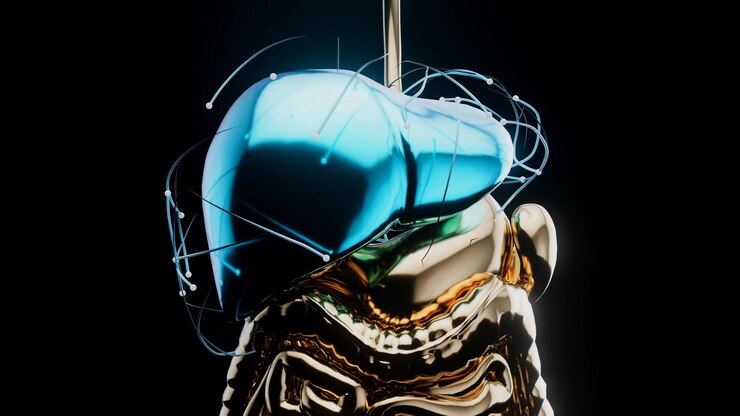When doctors narrow down and label your gastrointestinal issues as IBS, what they are really saying is, they don’t know what’s wrong with you! You cannot really blame them for being idiopathic — just the small and large intestine alone can stretch out to 27 feet! Finding what is causing your gastrointestinal issues can sometimes be like looking for a needle in a haystack! In this article, we will look at the chemical and mechanical processes that may lead to IBS, and find that needle in the haystack!
Why it’s so hard to heal gut issues?
The gastrointestinal complex is one big hole with a tube from the mouth to the anus. This hole is exposed to the outside world more than any other organ because, we have to constantly put things in it (including toxins). So it’s like a conveyor belt in a manufacturing facility that never gets a rest. To make things more complicated, this conveyor belt has two main hot regions — the stomach (acid) and the cecum. To make things more complicated, hot “lava” a.k.a. stomach acid, often infiltrate the beginning of the small intestine (the duodenum), and food tends to get stuck in the region between the end of the small intestine and beginning of large intestine (the cecum). Furthermore, the door that opens to the cecum often gets stuck, causing waste product to rot at the entrance of the doorway a.k.a. ileocecal valve.
Gastrointestinal issues such as IBS do not start in the colon — they start in the mouth. It starts with what you put in your mouth and the pH of your mouth. If your saliva is too acidic (5.5) or too alkaline (7.5), there goes your problem. The gram-positive bacteria in your mouth cannot protect your stomach if your saliva pH is not ideal!
The food that enters your stomach cannot be broken down properly if your stomach pH is not acidic enough (less than 2.5). There are certain proteins, enzymes and factors in your gut that will not be released or will not work properly if your stomach is not acidic enough. These include the intrinsic factor that binds to vitamin B12 in the stomach, then releases it into the small intestine; and the enzyme pepsin that helps break down proteins in food. Taking alkaline water or antacids like TUMS for acid reflux may make you feel better, but will surely deplete your stomach acid, leaving you vulnerable to bacterial infections and incomplete digestion of food.
As this broken down food moves down further the gastrointestinal tract, it encounters chemicals. One of the first chemical is bile from the gallbladder, used to alkalinize the acidity from the food coated with stomach acid. Bile release is activated by the existence of stomach acid. Thus low stomach acid equals low bile release. The next is sodium bicarbonate from the pancreas, also used to buffer food blessed with stomach acidity. Pancreatic enzymes, from the pancreas, are also released to further break down food, namely protease, to help break down proteins further; lipase, to help break down fats, and amylase, to help break down carbohydrates.
Now this processed food or chyme now enters the first, second and third parts of the small intestine, called the duodenum, jejunum and ileum, respectively. There, an extraction process goes on, releasing minerals, vitamins, enzymes, amino acids, fatty acid and other nutrients into the bloodstream through Intestinal finger-like projections called villi.
The remaining undigested food is welcomed at the door of the large intestine, called the ileocecal valve. Sometimes this door (that leads to the cecum) does not open all the way. This fully unopened door can sometimes make undigested food feel a little unwelcomed, causing some of it — because of waiting too long — to rot at this junction. This cascade of ileocecal valve dysfunction may lead to all manner of evil: abdominal pain, bloating, diarrhea, constipation and the birth of bacterial overgrowth.
This ileocecal valve dysfunction may also lead to a specific ileocecal valve incompetence — which is actually a real term. From this incompetence, the door of the cecum inappropriately stays open, allowing the movement of waste from the colon to backflow back into the small intestine, from whence it came — leading to all manner of evil: bloating, infections, vitamin C deficiency, emotional instability, diarrhea, and small intestinal bacterial overgrowth.
The food that gets by a properly working ileocecal valve on a timely fashion enters the acidic cecum. Some label the cecum (the beginning part of the the large intestine) as a second stomach, because of the high heat and acids it produces as food travels up the ascending colon.
In the colon, bacteria ferment undigested proteins, carbohydrates and fiber, producing the release of many gases, including hydrogen, carbon dioxide, sulfide, methane and ammonia. Much are recycled, while others are treated as waste product to be excreted.
Bacteria primarily in the colon also break down fiber from carbohydrates to produce short-chain fatty acids (SCFA) — including acetate, propionate, and butyrate — that nourish and keep colonic cell wall heathy and functional. Other less beneficial SCFA’s include formate, valerate, and hexanoate that are produced in lower amounts.
Water is also extracted from this undigested food and recycled back into the body. If there is some type of dehydration, for whatever reason, the result may become a mechanical issue, known as constipation!
Constipation
Diarrhea should not be labeled as the opposite of constipation — it may actually be a dramatic form of constipation, resulting from watery stool flowing pass impacted stool (or fecal impaction) too hard to move. The closest, official name for this diarrhea system may be called: paradoxical diarrhea. Diarrhea may also be due the ileocecal valve incompetence.
There is acute constipation and there is chronic constipation. Acute constipation only lasts a short period of time throughout one’s life. But chronic constipation may persist for years, even decades. Chronic constipation can lead to other mechanical digestive malfunction, even after the initial constipation situation is resolved.
The devastating effects of chronic constipation:
During chronic constipation or even after it is resolved, almost permanent damage may be done to certain muscular system throughout the colon. It is called anismus aka dyssynergic defecation, specifically paradoxical puborectalis contraction (PPC). What all this means is the muscles of the rectum don’t work — they are unrelaxed and stiff. All of this appropriately falls under an umbrella term called: paradoxical puborectalis syndrome (PPS).
Paradoxical puborectalis syndrome
At the base of the rectum is the control center that regulates all gastrointestinal and urinary activity. It is called the pelvic floor muscles, with a huge sling-like muscle called, the puborectalis.
Many people who suffer from gastrointestinal issues from chronic constipation may have a tight, stiff puborectalis, and not even know it.
Paradoxical puborectalis syndrome encompasses not only a dysfunction of the puborectalis, which is the involuntary contraction and tightening of this muscle when it should be relaxing to allow bowel movement, but also the associated symptoms like bloating, straining, incomplete (stool) evacuation, tenesmus, rectal discomfort and self consciousness caused by this dysfunction.
Treatment for paradoxical puborectalis syndrome:
First, to confirm PPS, you must see a pelvic floor specialist at the PELVIC PHYSIOLOGY CENTER and perform what is known as Anorectal Manometry and/or a balloon expulsion test (BET). If PPC is confirmed, then a series of EMS Biofeedback training may be implemented to retrain and relax the puborectalis muscle and anal sphincter muscles. Additionally, a pelvic floor physical therapist may be recommended to teach relaxation and stretching techniques which target the pelvic floor muscles.
The success rate of the aforementioned techniques is either unknown or very low!
May Be Better Options for PPS:
PPS like most syndromes may be hard to figure out and treat. But these are the recommendations I’ve personally seen and studied success in:
- Intimate Rose Vibrating Pelvic Wand
- Sea Buckthorn Oil suppositories
- Heather’s Tummy fiber
- Various herbs: Andrographis, Punarnava and Bhumi Amalaki
An extreme medical procedure for PPS:
Upon medical request, Xeomin injections into the puborectalis muscle, must be done by a qualified practitioner of botulinum toxin type A — with sufficient hours of experience.
Simply put, this procedure temporarily weakens or paralyzes puborectalis muscle by blocking the release of acetylcholine. This, in turn, relaxes that muscle, and makes bowel movement easier and more complete.
Xeomin® is a purified form of botulinum toxin type A, which lessens the chance of allergic reactions, compared to BOTOX®, which is composed of a mixture of proteins.
Xeomin is considered a neurotoxin, derived from the bacteria that causes botulism. Please read safety studies: click here and here.



